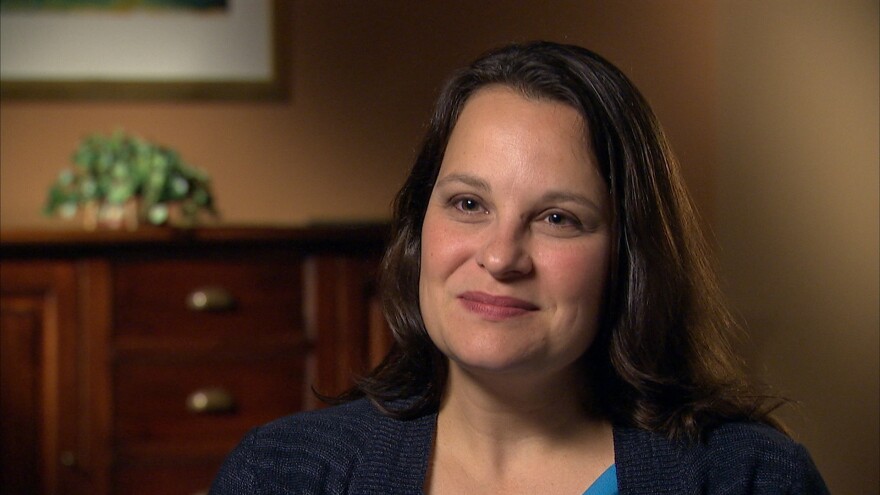On a recent, less-than-ideal, Saturday afternoon, some hearty kayakers and fishermen were making full use of the Harlem Road/Buffalo River boat launch site. The scene would not have been imaginable a half-century ago.
Condition & Concern
"There was a report issued in the 60's on the Buffalo River basically indicating the river was devoid of oxygen, was various colors, basically was declared dead. Certainly there would be no living creatures in the river," said Martin Doster, Regional Remedial Engineer for the Department of Environmental Conservation.
Doster was among the many stakeholders who offered perspective for the WNED-TV production of "If Our Water Could Talk," the initiative that examines the issues surrounding Buffalo's waterways.

After 58 years of fishing the area's waterways, Captain Tom Marks of Gr8 Lakes Fishing Adventures has a first hand perspective of the evolution of the Buffalo River.
"You know, the changes in the water quality, we saw a lot of reductions in after 1972, the Clean Water Act, reductions in nutrient flow from detergents and stuff, we took the phosphates out of them. The industrial waterways were cleaned up. Discharges were eliminated, so that part has really improved,"said Marks.

Improved Water
A half-century of improvements in the local waterways, specifically, the Buffalo River have been dramatic. Certainly federal legislation helped. So did the creation of the Environmental Protection Agency and the Department of Environmental Conservation.

It's impossible to pinpoint the most significant event or effort that sparked change in Buffalo's waterways. The list of contributors is too long, the number of factors too high.
While the water quality has changed so has the understanding of how the water can change the quality of life.
Recreation along Waterfront
As Executive Director of the Valley Community Association, Peg Overdorf serves a neighborhood that for many years has been trapped by its history. Surrounded by rails, abandoned industry and the Buffalo River, Overdorf faced a daunting reality as her organization tried to breath life into a crumbling section of the city.

"We run an event called the Buffalo RiverFest. We could not find an area to go on the river to have the fest," Overdorf said.
By networking with a potential seller, and gathering private and public funds, a purchase was made of land that would evolve into RiverFest Park on Ohio Street. Later, more river access was gained after a deal with the New York Power Authority to store their ice boom.
"These two parks have completely turned this neighborhood around," noted Overdorf.
Developers are purchasing neighborhood properties, looking to provide housing to an expected new flock of residents. Overdorf gives much of the credit to the political forces and funding unleashed by the likes of Brian Higgins and Mark Schroeder, and to the power found in the neighborhood's blue collar spirit.
"If people want to work hard, they can do anything. But, you gotta work hard at it. This has been six years. Continues to be a job. I have a real job running the community center. This is sort of a side kick," said Overdorf.
Preserving Nature
Plenty of hard work has gone into Tifft Nature Preserve, but luck may have been an equal partner. In 1972, city leaders possessed a more narrow vision of the possibilities of the 264 acres of land that would eventually become a preserve.
"The city of Buffalo had planned to use the property as a dump for the city of Buffalo, an official dump," said Lauren Makayenko, Experience Manager for Tifft Nature Preserve.

Following complaints from South Buffalo residents, officials abandoned the idea of a new city dump. Tifft Nature Preserve was born.
"A lot of work did need to be done. It took about four years before they could open it to the public as a preserve," Makayenko explained.
"Where they sculpted the mounds area, that's our grasslands habitat. They brought over refuse from a new Squaw Island facility so they had to transport some refuse to there. And also the boardwalks were built. The trails were groomed. Trees were planted. A lot of things had to be done before they could really make it a preserve," said Makayenko.
40- years after it was spared from being the garbage heap, Tifft Nature Preserve is a place where outdoor activities -- fishing, bird watching, snowshoeing are commonplace, all just a short distance from downtown Buffalo.

It's another of the many success stories around Buffalo's waterfront, which has become a centerpiece of civic hopes in the early 21st century.

"I think we're lucky enough in our generation that we no longer have to make a choice between ecology and economy," said Jill Jedlicka, Executive Director for the Buffalo Niagara Riverkeeper.
"They're tied to one another. A healthy lake, a healthy river, a healthy ecosystem means a healthy economy for Western New York," said Jedlicka.


